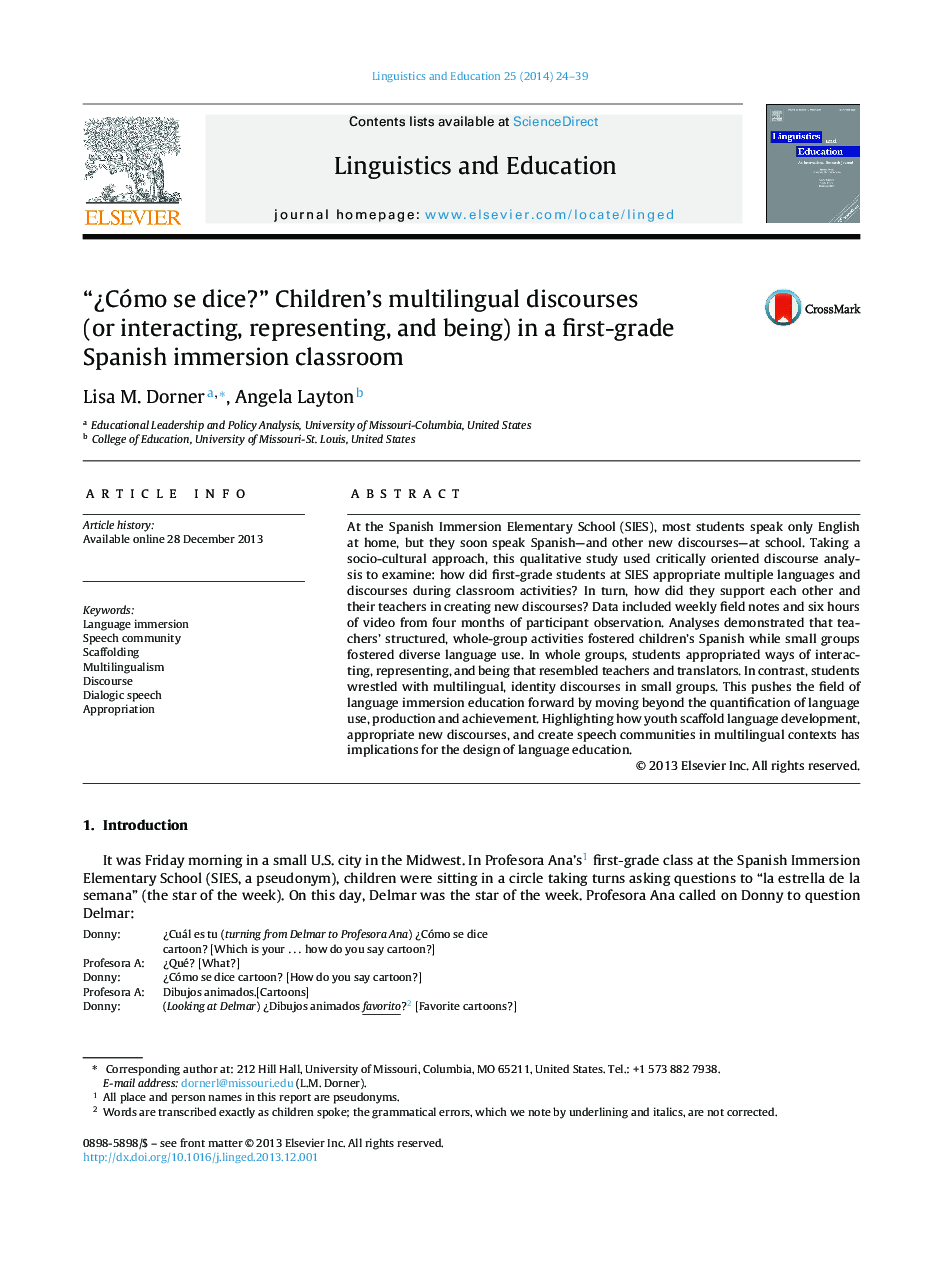| Article ID | Journal | Published Year | Pages | File Type |
|---|---|---|---|---|
| 366153 | Linguistics and Education | 2014 | 16 Pages |
At the Spanish Immersion Elementary School (SIES), most students speak only English at home, but they soon speak Spanish—and other new discourses—at school. Taking a socio-cultural approach, this qualitative study used critically oriented discourse analysis to examine: how did first-grade students at SIES appropriate multiple languages and discourses during classroom activities? In turn, how did they support each other and their teachers in creating new discourses? Data included weekly field notes and six hours of video from four months of participant observation. Analyses demonstrated that teachers’ structured, whole-group activities fostered children's Spanish while small groups fostered diverse language use. In whole groups, students appropriated ways of interacting, representing, and being that resembled teachers and translators. In contrast, students wrestled with multilingual, identity discourses in small groups. This pushes the field of language immersion education forward by moving beyond the quantification of language use, production and achievement. Highlighting how youth scaffold language development, appropriate new discourses, and create speech communities in multilingual contexts has implications for the design of language education.
